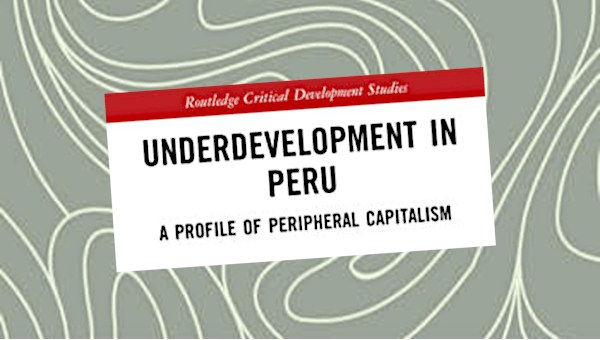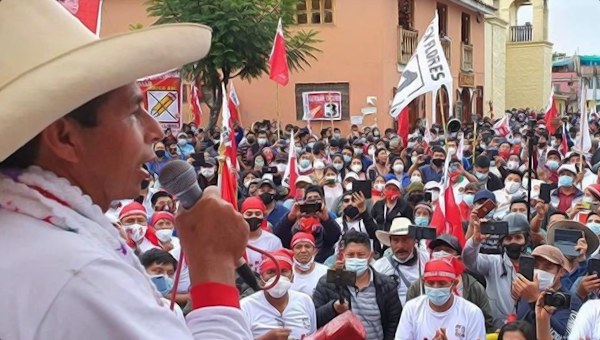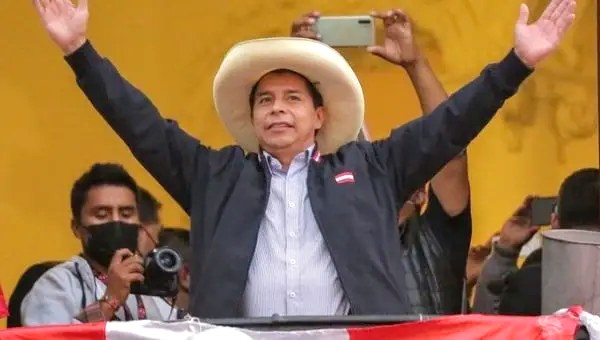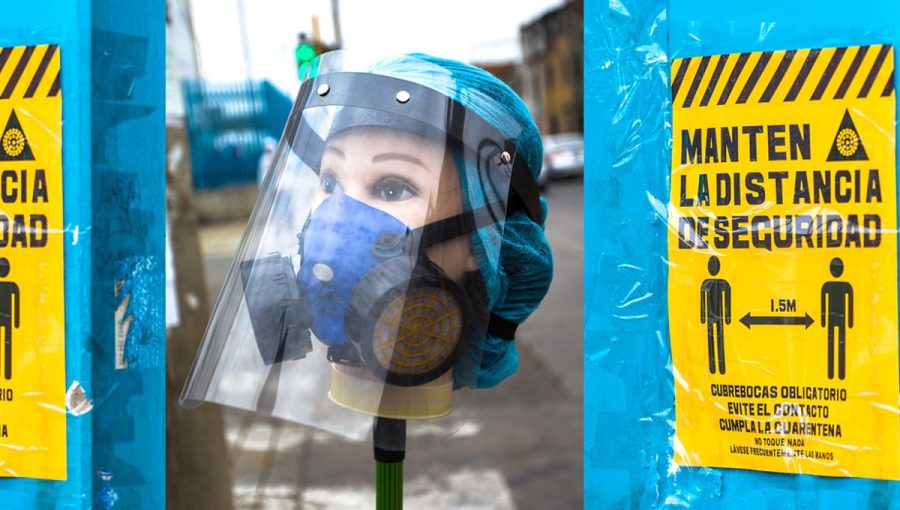Political Crisis in Peru: From the Left to Right-Wing Authoritarianism
Since the impeachment of Peru’s president Pedro Castillo on 7 December 2022, Peru has attracted the attention of policy makers all over the world. The massive protests that followed Castillo’s detention resulted in dozens of deaths, mainly caused by bullets from the army or the police. In this article, we discuss the origin and evolution of the political crisis in Peru and its economic effects.
The victory of the Left in the Peruvian presidential elections of 2021 was a historical electoral result for the progressive forces which is only comparable with the electoral successes in the 1980s.
The electoral win did not come as a surprise because, since the presidential elections of 2006, the results for the Left have been remarkable, especially in the southern regions (the focus of the current protests). In the 2016 presidential elections, the Left obtained about 20% of the valid vote. With a minimum of 45,000 votes, the presidential election of 2021 was won by Castillo, a former strike leader of primary and secondary school teachers.
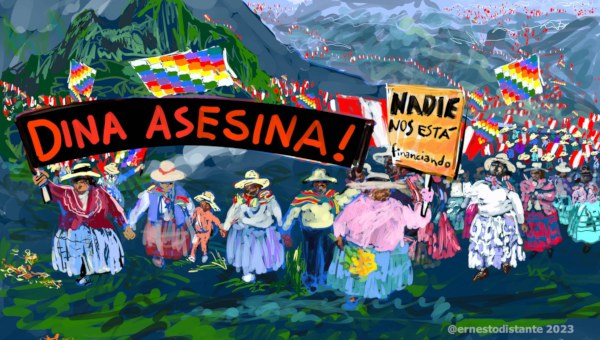
Castillo and the Opposition
While the triumph of the Left might not have come as a surprise, the radical character of the winning candidate certainly was. Castillo was a member of the political party Peru Libre, a declared Marxist-oriented political organization. The party’s goal is to convert Peru into a socialist country. Since the 1980s, the decade of left-wing oriented terrorism, any reference to socialism has been stigmatized by the Right and transmitted to the population through their communication channels. This policy is called terruqueo and is now used against the protesters who daily oppose the current government.
From the very start of his presidency, Castillo faced ferocious opposition from the majority in Congress to any proposals that would harm the political and economic status quo. The first victim of the offensive of the Right was the Minister of Foreign Affairs Héctor Béjar, who dared to initiate a process that would lead to an independent foreign policy. Pressure from the Right forced him to resign. Proposals to change the tax system, elaborated in cooperation with the IMF, to be applied to the mining industry in order to increase tax revenue, were derogated by Congress.
During his 17 months as president of Peru, Castillo was not given a real opportunity to govern, as almost every week one of his ministers was threatened to be ousted by Congress. For different reasons, in his first year as president, Castillo appointed 58 ministers, replacing a minister every nine days. The ongoing political instability contributed to economic instability, causing capital flight, a fall in the exchange rate, and inflation.
The Right considered President Castillo a permanent threat to the interests of the major businesses in the country. However, he was, in fact, definitively not a threat. His governments did not introduce changes in the country’s economic, social, and cultural policies. While a second agrarian reform was announced (the first reform was introduced during the military regime of General Juan Velasco in the 1970s), it was never implemented. Foreign policy was business as usual, and the repressive forces used the same repressive logic as in previous governments. Only in the case of labour were some changes starting to be discussed. The Ministers of Economy and Finances were adherents to Keynesian or neoliberal economic thinking. As a matter of fact, the lack of a political vision for the future of the country, expressed in policies, proposals, and political strategies, manifested itself in the absence of any political, economic, social, and cultural changes that were led or initiated by the Peruvian State.
December 2022: Impeachment
The supposed threat that Castillo symbolized formed the principal reason for the Right to continuously search for reasons to impeach him. This opportunity came on 7 December 2022 with Castillo’s failed attempt to dissolve the Parliament, to establish an emergency cabinet, and to call for new parliamentary elections. The new parliament would have created a new constitution, another major threat to the interests of the principal corporations in the country (extractive industries, finance, and communication).
The impeachment and imprisonment of Castillo gave rise to massive protests against the government of the first female president in Peruvian history, Dina Boluarte. Boluarte had been his vice president and just like Castillo a former member of Peru Libre. While Castillo had resigned from the party, Boluarte had been expelled from the party, already before the December 2022 occurrences. Political differences with the party were the principal reasons why they both left the party.
Although Boluarte has a left-wing background, just like previous presidential candidates that were elected on a relatively progressive electoral platform such as Alberto Fujimori (1990) and Ollanta Humala (2011), they turned right. The Boluarte regime can be considered an authoritarian right-wing government. Its cabinets are made up of liberal and center-right individuals. The massive repression and dozens of deaths caused that the protesting population accused the current president to be a murderer. Even a Dina Boluarte “is a murderer” song was created and is chanted during the demonstrations (Dina asesina, el pueblo te repudia).
The population demanded new general elections and a Constituent Assembly. A part of the protests also demanded the release and restitution of Castillo.
These demands for new elections and a Constituent Assembly are not surprising if one takes into consideration that the economic model and the neoliberal constitution of 1993 have not fulfilled the socioeconomic perspectives of the mass of the population. In 2011, the poverty rate stood at 27.8%. In 2021, this was still 25.8%. The rates of underemployment were respectively 51.1% and 47.4%. In 2010, the Gini index was 45.5. Ten years later, the Index had only slightly reduced to 43.8. Castillo succeeded in winning the presidential elections of 2021 because he captured the vote of the dissatisfied masses, unhappy with the neoliberal extractive development model in place, the corruption scandals of the previous years, and the fact that individuals living in the popular districts have been the most affected by COVID-19.
The protests were initiated and led by the inhabitants of the southern regions of the country (Puno, Ayacucho, Andahuaylas, and Cusco). The principal electoral bases of the Left and Castillo are located precisely in these regions. Other reasons for the leadership of these provinces in the protests are their identification with Castillo and the overt racist attitude of leading individuals in Congress during Castillo’s months in government.
The protests were met with repression, resulting in the death of sixty citizens, many of whom did not even participate in the protests. However, the repression did not stop the protests. Since Castillo was ousted by Congress, protests have been organized almost every day. It started in the south and rapidly expanded to the rest of the country. Regularly, major demonstrations take place in Peru’s capital city, Lima.
The impeachment of Castillo and the reduction of the former governmental party Peru Libre to the role of a small opposition party in Congress was definitively in the interest of the principal business groups. There was no insecurity anymore regarding the economic course of the government. Directly at the start of her presidency, business expressed their trust in the new president.
The continuing protests against the government, a consequence of the unwillingness of the government and Congress to move the general elections to the first half of 2023 and their refusal to organize a referendum on the question of a new constitution, is having a negative impact on the economy. The reluctance of the Right regarding elections and a referendum might have been caused by the fact that it is fragmented and is not able to present a unified candidate. The protests are helping to unite the Left.
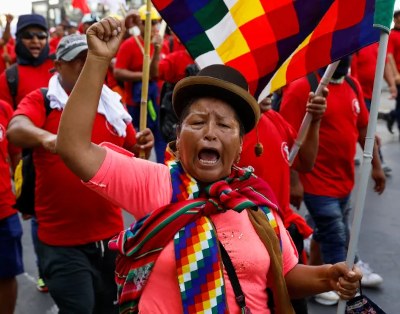
Business is beginning to reduce its expectations of the current government, as it has not been able to solve the crisis. Roadblocks have caused scarcity in some regions and led affected mining corporations to suspend their activities because they were not able to transport their products. And now, even the transport sector is planning strikes to demand the resignation of President Boluarte. Latest polls show that the majority of the population wants the President and Congress to resign and new elections to be held as soon as possible. In fact, worldwide, Peruvians are showing themselves to be against the regime.
The police and military repression of the social protests, the massive detention of protesters, the arbitrary detention of supposed leaders of the protests, the attacks on the independent press, and the massive deployment of police forces, only seen in police states, is starting to isolate the regime internationally. Critique on the handling of the crisis and the violation of human rights denounced by the presidents of Colombia (Petro), Mexico (AMLO) and Chile (Boric) has created diplomatic tensions. Petro and AMLO have even been called persona non grata, Peru’s ambassador has been retreated from Bogotá, and the ambassador of Mexico has been expelled from Lima.
The international diplomatic tensions might have a negative impact on the development of the Pacific Alliance, a free trade alliance between Peru, Colombia, Chile, and Mexico. The suspension of Peru might even be expected. Apart from the mentioned Latin American presidents, the United Nations and the United States are also starting to get worried about what is going on in Peru.
The Peruvian government and Congress have been turning the political crisis that started on 7 December 2022 into a political, economic, and social drama. It has even become an issue in the international political arena. Peru is turning authoritarian and undemocratic. It seems that the country is returning to the darkest episodes of the 1990s. The police and the armed forces are on a permanent state of alert. •


